nohatnoswim
Active member
- Joined
- Aug 4, 2010
- Messages
- 36
Hi All,
I'm fortunate to have got 5 Cinema Engineering 4031B's in my life recently.
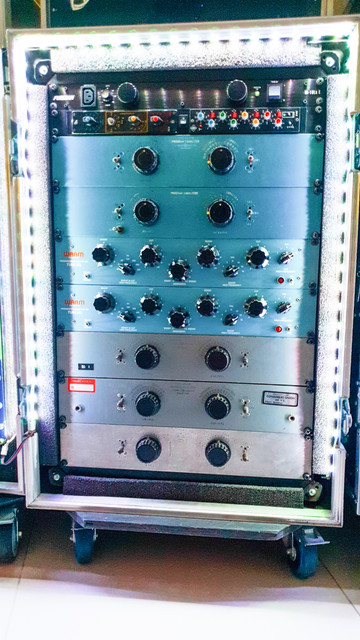
I installed them and have found some strange behavior which I'm trying to debug.
When I got them, the cable ends were still in place indiciating where hot and cold had been before I got them:
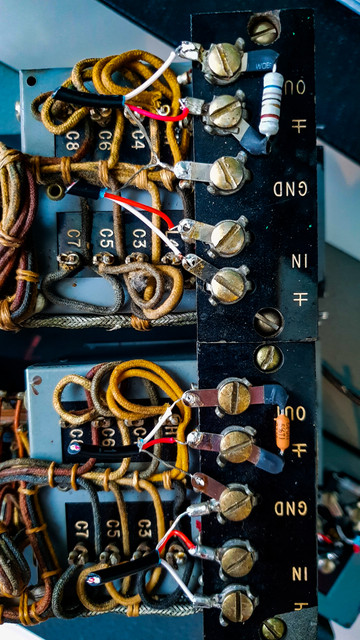
So I installed them in the same way myself, with blue cable as my hot:
There are 2 types of connection board here, but old wires were on all so I just followed suit.
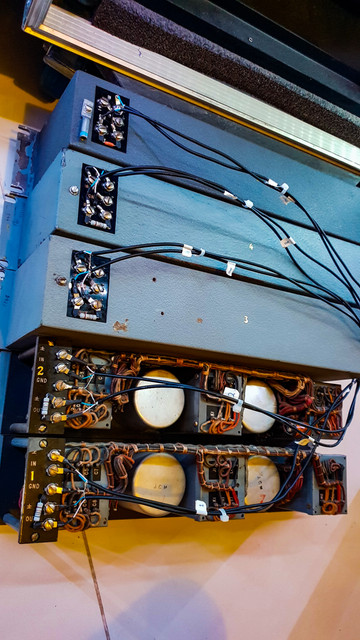
When I patch them in on their own through my system in the following configuration, all is fine - they operate as expected with the gain loss.
Interface => Patchbay => EQ => Patchbay => Interface
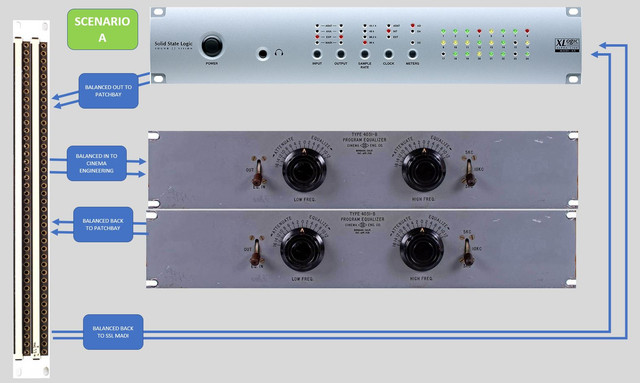
However, when I add my DI's into the mix, the pot controls on the eq appear to reverse - eg gain is cut, and cut is gain.
I don't think it as simple as they are switched, they also seem to not be boosting and cutting as much as they should be either
Interface => Patchbay => EQ => Patchbay => DI => Patchbay => Interface
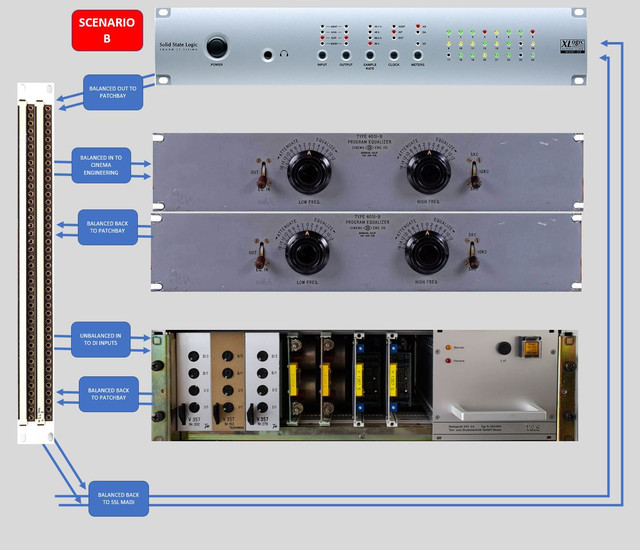
I've considered that the previous cabling may have used white as hot instead of red - so I've possibly got them reversed - but I don't want to go pulling them out and re cabling just to check as it's a bit of a job to do it.
Doesn't seem to matter which DI's it's plugged into - they all have the same result.
They are a thing of beauty though I have to make up that gain loss to make them usable.
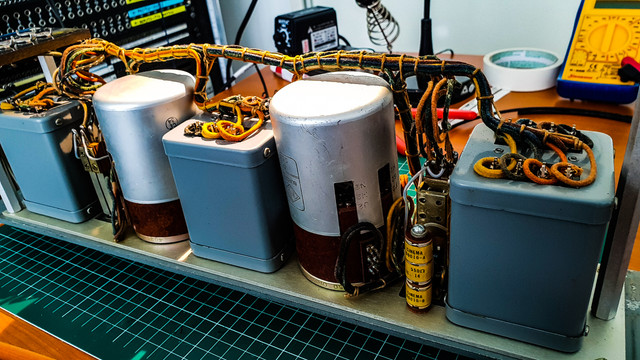
Anyone got any thoughts on what's going on here ?
Thanks
I'm fortunate to have got 5 Cinema Engineering 4031B's in my life recently.

I installed them and have found some strange behavior which I'm trying to debug.
When I got them, the cable ends were still in place indiciating where hot and cold had been before I got them:

So I installed them in the same way myself, with blue cable as my hot:
There are 2 types of connection board here, but old wires were on all so I just followed suit.

When I patch them in on their own through my system in the following configuration, all is fine - they operate as expected with the gain loss.
Interface => Patchbay => EQ => Patchbay => Interface

However, when I add my DI's into the mix, the pot controls on the eq appear to reverse - eg gain is cut, and cut is gain.
I don't think it as simple as they are switched, they also seem to not be boosting and cutting as much as they should be either
Interface => Patchbay => EQ => Patchbay => DI => Patchbay => Interface

I've considered that the previous cabling may have used white as hot instead of red - so I've possibly got them reversed - but I don't want to go pulling them out and re cabling just to check as it's a bit of a job to do it.
Doesn't seem to matter which DI's it's plugged into - they all have the same result.
They are a thing of beauty though I have to make up that gain loss to make them usable.

Anyone got any thoughts on what's going on here ?
Thanks















![Electronics Soldering Iron Kit, [Upgraded] Soldering Iron 110V 90W LCD Digital Portable Soldering Kit 180-480℃(356-896℉), Welding Tool with ON/OFF Switch, Auto-sleep, Thermostatic Design](https://m.media-amazon.com/images/I/41gRDnlyfJS._SL500_.jpg)


















